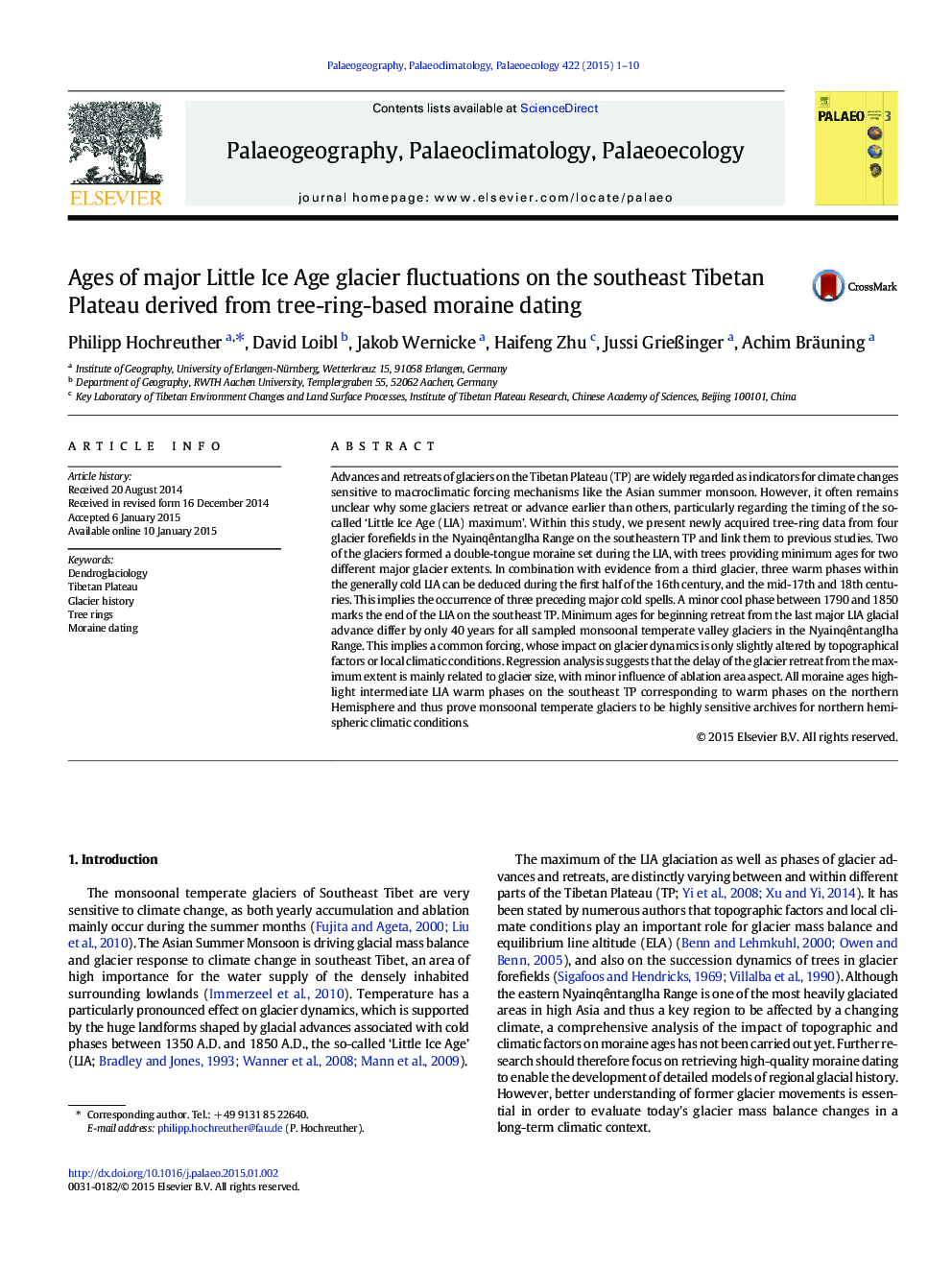| کد مقاله | کد نشریه | سال انتشار | مقاله انگلیسی | نسخه تمام متن |
|---|---|---|---|---|
| 4466015 | 1622168 | 2015 | 10 صفحه PDF | دانلود رایگان |
• Moraine ages of the last LIA glacier advance in southeast Tibet are highly uniform.
• Three major cold phases can be clearly identified.
• Response time of a glacier to climate warming is highly dependent on glacier area.
Advances and retreats of glaciers on the Tibetan Plateau (TP) are widely regarded as indicators for climate changes sensitive to macroclimatic forcing mechanisms like the Asian summer monsoon. However, it often remains unclear why some glaciers retreat or advance earlier than others, particularly regarding the timing of the so-called ‘Little Ice Age (LIA) maximum’. Within this study, we present newly acquired tree-ring data from four glacier forefields in the Nyainqêntanglha Range on the southeastern TP and link them to previous studies. Two of the glaciers formed a double-tongue moraine set during the LIA, with trees providing minimum ages for two different major glacier extents. In combination with evidence from a third glacier, three warm phases within the generally cold LIA can be deduced during the first half of the 16th century, and the mid-17th and 18th centuries. This implies the occurrence of three preceding major cold spells. A minor cool phase between 1790 and 1850 marks the end of the LIA on the southeast TP. Minimum ages for beginning retreat from the last major LIA glacial advance differ by only 40 years for all sampled monsoonal temperate valley glaciers in the Nyainqêntanglha Range. This implies a common forcing, whose impact on glacier dynamics is only slightly altered by topographical factors or local climatic conditions. Regression analysis suggests that the delay of the glacier retreat from the maximum extent is mainly related to glacier size, with minor influence of ablation area aspect. All moraine ages highlight intermediate LIA warm phases on the southeast TP corresponding to warm phases on the northern Hemisphere and thus prove monsoonal temperate glaciers to be highly sensitive archives for northern hemispheric climatic conditions.
Journal: Palaeogeography, Palaeoclimatology, Palaeoecology - Volume 422, 15 March 2015, Pages 1–10
